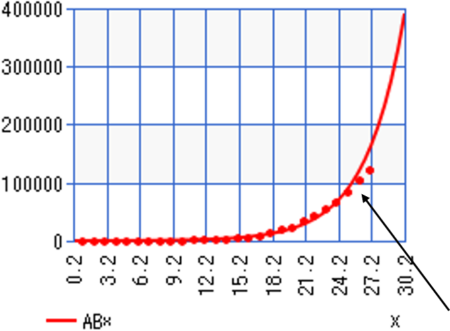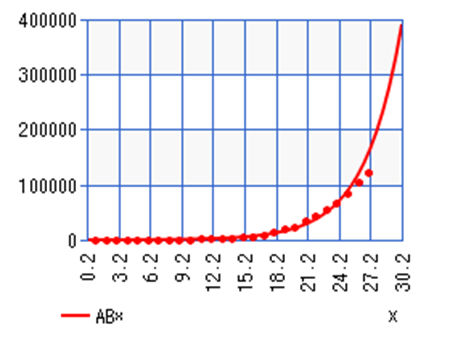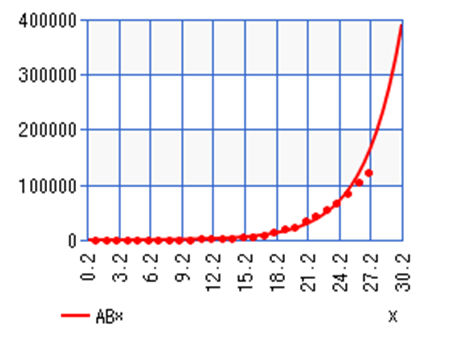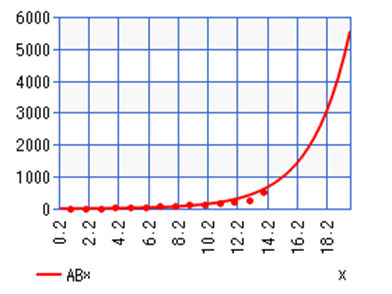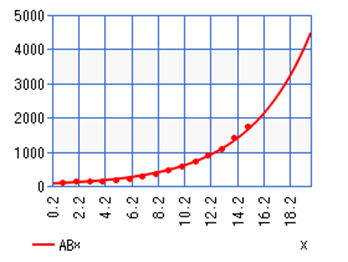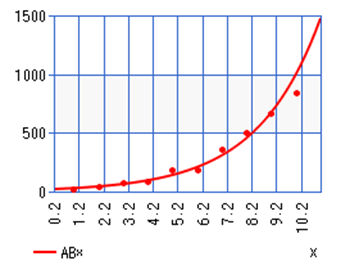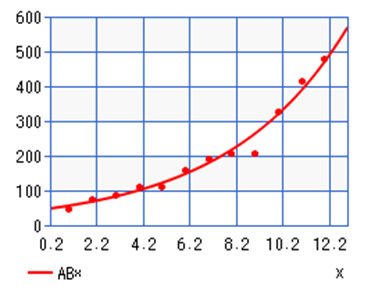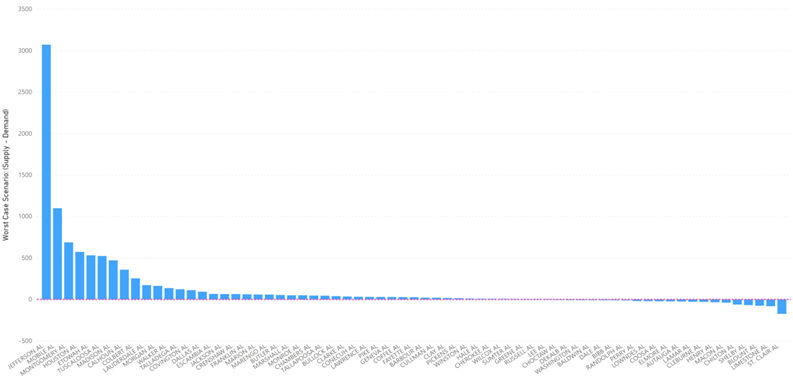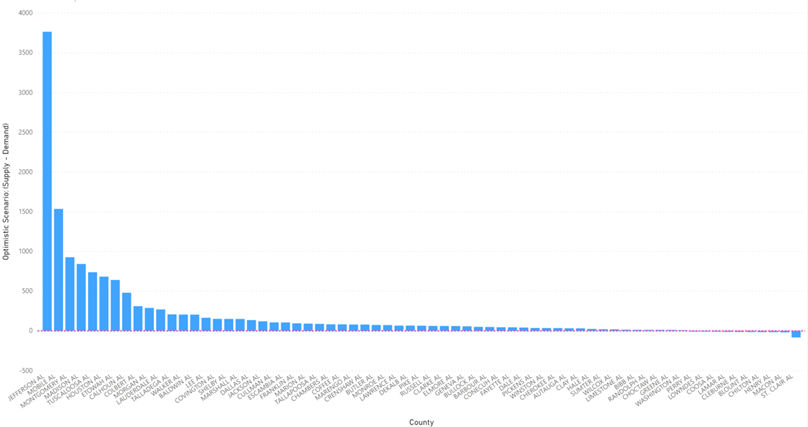by Jolly Nanda | Jun 10, 2020 | Analytics
Authored by Ayesha Rajan, Research Analyst at Altheia Predictive Health
Introduction
Chronic Kidney Disease is a condition involving the gradual loss of kidney function; your kidneys filter blood to remove waste and toxins which in turn helps control blood pressure and maintain red blood cell function and bone health so their ability to function properly is clearly very important. Chronic Kidney disease is caused by presence of diabetes, high blood pressure, obstruction of the urinary tract and range of other conditions including glomerulonephritis, interstitial nephritis, polycystic kidney disease, vesicoureteral and pyelonephritis (Mayo Clinic). Many patients do not realize they have Chronic Kidney Disease until it has progressed quite far in the 5 stages but when symptoms do show up, they include itching, muscle cramps, lack of appetite, nausea, unusual swelling, changes in frequency of urination and trouble breathing or sleeping. Once diagnosed, the disease is managed by slowing the progression of kidney damage to prevent end-stage kidney failure which necessitates dialysis or a kidney transplant. Currently, 15% of the American population (37 million people) has Chronic Kidney Disease but many of them do not know it – this is a frightening data point given that 340 people begin dialysis treatment every that and that kidney disease is the 9th leading cause of death in the United States (CDC). Additionally, UC San Francisco has calculated that CKD costs $79 billion dollars for Medicare patients and predicts that 16.7% of the population will contract CKD by 2030 which shows a clear need for further research in this area (Kent).
Key Data Points
Several factors increase a patients’ risk of chronic kidney disease including presence of diabetes or hypertension, heart disease, smoking activity, obesity, race (African Americans, Native Americans and Asian Americans are all higher risk race groups), family history and age (Mayo Clinic). These factors are often factored into predictive algorithms along with blood panels which hold key variables such as Albumin to Creatinine Ration (ACR), Serum Creatinine, Blood Urea Nitrogen (BUN) and Glomerular Filtration Rate (GFR). Urine tests can also measure relevant variables such as Urine Protein, Microalbuminuria and Creatine Clearance Rate. All of these variables measure kidney function and can predict the onset or stage of Chronic Kidney Disease.
Current Research
An important study out of Cairo University utilized multiple algorithms to study the importance of physical variables in class identification of CKD. The study used probabilistic neural networks, multilayer perceptron, support vector machine and radial basis function algorithms to identify which algorithm would most accurately identify a patients’ stage of CKD. The study found that the probabilistic neural network algorithm yielded the highest classification accuracy at 96.7% and used that information to add weight to each considered variable and improve the prediction performance of CKD stage diagnosis. This study showed that each variable was, indeed, not weighted equally. In fact, there was a significant difference between the 100% importance of serum creatinine and a 9.256% importance of hypertension in diagnosis. This is important in identifying at risk groups because, clearly, not everyone with hypertension will have CKD but those at high risk serum creatinine levels are very likely to need treatment (Rady). Research conducted in the United States around CKD draws from the following databases for information: The National Health and Nutrition Examination Survey; United States Renal Data System; Kaiser Permanente; and Veterans Affairs Healthcare System. These databases are essential to the use of artificial intelligence and machine learning techniques because they can provide ranges for many of the physical variables listed above. However, outside of physical variables, research has also been done on nonconventional risk factors of CKD. For example, several studies have evaluated air pollution using “of land-use regression and spatiotemporal models that utilized satellite remote-sensing aerosol optical depth data” to associate air pollution with incidence of CKD in a population. These studies have concluded that increased air pollution could be correlated with incidence of CKD and decrease of glomerular filtration rate. Another study using artificial intelligence used clinical notes to evaluate predictors of CKD and found high-dose ascorbic acid and fast food consumption to be novel predictors (NCBI). Artificial intelligence can actually do most of the heavy lifting in studies like these in which we can gain insight into the impact of factors that we may have never otherwise considered to be relevant in the study of Chronic Kidney Disease.
Conclusion
Chronic Kidney Disease affects (and will continue to affect) a significant number of the population and it is clear that more research needs to be done in this area. To make that possible, some things need to change. For example, accessibility to medical data needs to be made easier so that research can happen at various levels, i.e. medical, academic and corporate. This ensures that those who want to research these topics can do so without the time constraints of existing rules and regulations so that developments can be made mainstream to patients and providers in the timeliest matter. Additionally, federal funding could be redirected to research in this area to improve data processing techniques which are currently fragmented and hinder the success rate of the existing multidimensional algorithms.
Prevention
The necessary steps for preventing Chronic Kidney Disease are very much in line with leading a generally healthy life. Mayo Clinic recommends that one maintain a healthy weight through physical exercise and calorie reduction, not smoke and follow responsible usage guidelines for over-the-counter medications as abusing pain relievers can cause kidney damage. Furthermore, if you are at risk, it is important to check in with your physician frequently to track and manage symptoms of Chronic Kidney Disease (Mayo Clinic). If you are unsure about whether or not you might be at risk of contracting kidney disease, you may consider using the CDC’s Chronic Kidney Disease Risk Calculator at: https://nccd.cdc.gov/CKD/Calculators.aspx#tab-Bang.
Works Cited
“Chronic Kidney Disease Basics.” Centers for Disease Control and Prevention, Centers for Disease Control and Prevention, 7 Feb. 2020, www.cdc.gov/kidneydisease/basics.html.
“Chronic Kidney Disease.” Mayo Clinic, Mayo Foundation for Medical Education and Research, 15 Aug. 2019, www.mayoclinic.org/diseases-conditions/chronic-kidney-disease/symptoms-causes/syc-20354521.
Kent, Jessica. “Chronic Kidney Disease Patients Face Significant Care Disparities.” HealthITAnalytics, HealthITAnalytics, 17 July 2019, healthitanalytics.com/news/chronic-kidney-disease-patients-face-significant-care-disparities.
Rady, El-Houssainy A., and Ayman S. Anwar. “Prediction of Kidney Disease Stages Using Data Mining Algorithms.” Informatics in Medicine Unlocked, Elsevier, 7 Apr. 2019, www.sciencedirect.com/science/article/pii/S2352914818302387.
Zeng, Xiao-Xi, et al. “Big Data Research in Chronic Kidney Disease.” Chinese Medical Journal, Medknow Publications & Media Pvt Ltd, 20 Nov. 2018, www.ncbi.nlm.nih.gov/pmc/articles/PMC6247601/.

by Jolly Nanda | Mar 30, 2020 | Covid
This article focuses on a simple exponential regression fit to predict the day by day total cases of Covid-19 in the United States, as well as a discussion regarding how this will affect the American population given the worst-case scenario. We have also analyzed the number of hospital beds available at a county level and the capacity to handle these Covid-19 cases. There are a few sample states with county data in this article but we have published all 50 states at our website.
By Ayesha Rajan, Research Analyst for Altheia Predictive Health
Data, Analysis and Discussion
For data collection, I used Worldometer’s “Total Coronavirus Cases in the United States” graph, starting from March 2nd, to create the following table.
| Days | Dates | Number of cases |
| 1 | March 2nd, 2020 | 100 |
| 2 | March 3rd, 2020 | 124 |
| 3 | March 4th, 2020 | 158 |
| 4 | March 5th, 2020 | 221 |
| 5 | March 6th, 2020 | 319 |
| 6 | March 7th, 2020 | 435 |
| 7 | March 8th, 2020 | 541 |
| 8 | March 9th, 2020 | 704 |
| 9 | March 10th, 2020 | 994 |
| 10 | March 11th, 2020 | 1,301 |
| 11 | March 12th, 2020 | 1,630 |
| 12 | March 13th, 2020 | 2,183 |
| 13 | March 14th, 2020 | 2,770 |
| 14 | March 15th, 2020 | 3,613 |
| 15 | March 16th, 2020 | 4,596 |
| 16 | March 17th, 2020 | 6,344 |
| 17 | March 18th, 2020 | 9,197 |
| 18 | March 19th, 2020 | 13,779 |
| 19 | March 20th, 2020 | 19,367 |
| 20 | March 21st, 2020 | 24,192 |
| 21 | March 22nd, 2020 | 33,592 |
| 22 | March 23rd, 2020 | 43,781 |
| 23 | March 24th, 2020 | 54,856 |
| 24 | March 25th, 2020 | 68,211 |
| 25 | March 26th, 2020 | 85, 435 |
| 26 | March 27th, 2020 | 104,126 |
| 27 | March 28th, 2020 | 123, 578 |
The next step was to simply plug this information into a calculator which then provides two variables, “a” and “b”, such that the function can predict the total number of Covid-19 -19 cases by day. At the time, we have a= 73.5911229 and b= 1.328563895 and as each day goes on, we can add more data and improve accuracy. As such, we could expect the next few days to look something like this:
| Day | Date | Total Number of Cases |
| 29 | March 31st, 2020 | 278, 558 |
| 30 | April 1st, 2020 | 370, 082 |
| 31 | April 2nd, 2020 | 491, 678 |
| 32 | April 3rd, 2020 | 653, 226 |
| 33 | April 4th, 2020 | 867, 852 |
We could expect to see these numbers, but it is unlikely for reasons we will discuss below. Although it is great information for us to know on the national level, however, it is ultimately too broad to be actionable or even entirely accurate. Analysis at the state and county level can give hospitals a much more accurate idea of spread in each specific area. Exponential regression is very easy to do on a scientific calculator by simply plugging in inputs, x and y, as I did in the table above. There are also several online calculators with the same abilities. At that point, states can better prepare for demand for hospital beds and ventilators.
For example, let us look at New York which has been hit hard by Covid-19. If we set up the table as above for New York, we can see the following:
| Day | Date | Total Number of Cases (y) |
| 1 | March 4th, 2020 | 6 |
| 2 | March 5th, 2020 | 22 |
| 3 | March 6th, 2020 | 33 |
| 4 | March 7th, 2020 | 76 |
| 5 | March 8th, 2020 | 105 |
| 6 | March 9th, 2020 | 142 |
| 7 | March 10th, 2020 | 173 |
| 8 | March 11th, 2020 | 216 |
| 9 | March 12th, 2020 | 216 |
| 10 | March 13th, 2020 | 421 |
| 11 | March 14th, 2020 | 524 |
| 12 | March 15th, 2020 | 729 |
| 13 | March 16th, 2020 | 950 |
| 14 | March 17th, 2020 | 1,700 |
| 15 | March 18th, 2020 | 2,382 |
| 16 | March 19th, 2020 | 4,152 |
| 17 | March 20th, 2020 | 7,102 |
| 18 | March 21st, 2020 | 10,356 |
| 19 | March 22nd, 2020 | 15,168 |
| 20 | March 23rd, 2020 | 20,875 |
| 21 | March 24th, 2020 | 25,665 |
| 22 | March 25th, 2020 | 30,811 |
From this table, we find that in the format, a= 10.08977392 and b= 1.45480788. We can then make the same predictions we did on the national level at the state level. For comparison, let’s look at a different state – Alabama.
| Days | Date | Total Number of Cases (y) |
| 1 | March 13th, 2020 | 1 |
| 2 | March 14th, 2020 | 6 |
| 3 | March 15th, 2020 | 12 |
| 4 | March 16th, 2020 | 28 |
| 5 | March 17th, 2020 | 36 |
| 6 | March 18th, 2020 | 46 |
| 7 | March 19th, 2020 | 68 |
| 8 | March 20th, 2020 | 81 |
| 9 | March 21st, 2020 | 124 |
| 10 | March 22nd, 2020 | 138 |
| 11 | March 23rd, 2020 | 167 |
| 12 | March 24th, 2020 | 215 |
| 13 | March 25th, 2020 | 283 |
| 14 | March 26th, 2020 | 506 |
For this table, we find that in the format, a= 3.163963707 and b= 1.458356752. Compare these variables, a and b, to that of New York and look at Day 14 in either state – it is instantly clear the importance of making predictions at a more specific regional level.
However, there are flaws to this methodology; take a look at the graphs on the next page. I’ve also included graphs for Colorado, Missouri, Louisiana and Oregon for further comparison.
| Positive Covid-19 Cases in the United States March 4th– 26th |

|
| Positive Covid-19 Cases in New York March 4th– 26th |

|
| Positive Covid-19 Cases in Alabama March 13th– 26th |

|
| Positive Covid-19 Cases in Colorado March 14th– 28th |

|
| Positive Covid-19 Cases in Missouri March 19th– 28th |

|
| Positive Covid-19 Cases in Louisiana March 16th– 28th |

|
| Positive Covid-19 Cases in Oregon March 18th– 28th |

|
Looking at these graphs, we begin to see some issues in the use of exponential regression for prediction and the importance of recognizing that is a tool for predicting the worst-case scenario. What we can see here is that the most recent points for the United States and New York are beginning to stray away from the predicted exponential curve – this is a hopeful indication that precautions, such as social distancing and the closing of schools and non-essential businesses, are working and that the curve is flattening. However, if we look at Colorado, Louisiana, and Oregon we can see that there is much better fit to the exponential curve and that, at least for now, these states will likely see more benefit to using exponential regression than states where the curve is beginning to flatten.
With that in mind, it is important to adjust these predictive functions as new data becomes available to keep them as accurate as possible. If this trend seen in the graph of national cases continues, it will become more fitting to move forward with prediction using linear, rather than exponential, regression. It is also important to note that we are not necessarily seeing exponential growth in every area. For example, we can see in the graph for cases in Alabama that the points do not fit the exponential curve as well as the points mapped for national cases or cases in New York. This could mean that we are not yet at the point of exponential growth and will need to add more data each day to see a better fit; or that the spread in Alabama does not have the same rate of spread as in New York due to other factors, such as New York being more densely populated, having more visitors, etc.
The reason we used exponential regression for this article is because of the documented exponential nature of infection in Italy and China. While this method of prediction can work in the short term and help us allocate resources for the worst case, we should (and will in the next article) also look at daily rates of change and, likely begin to shift from exponential to linear regression to see a better fit.
As it stands, which hospitals are prepared for the incoming influx of patients and which hospitals will struggle to meet increased demand? To answer this question, we analyzed data at the county level using the same methodology as in our last as our last article in which we used Imperial College London’s prediction for cases with all, none and some precautions taken to prevent spread. We will attach our findings in a spreadsheet however, here is a sample of our data and some takeaways. For our example, we will look at Alabama again.
Supply vs Demand of Beds Available in Alabama – Worst Case Scenario

Fig 1: The above figure shows Supply minus Demand at peak when no precautions are taken to prevent spread. All counties appearing above the red dashed line have capacity, even at peak. All Counties at or falling below the red line are will not be able to meet demand. In this scenario, peak will hit mid-May. Planning for servicing counties that either do not have hospitals or have overburdened systems should be made. Some counties will have capacity to redirect to needed areas.
Fig 2: In the more likely scenario where some precautions are taken to flatten the curve, data suggests some counties will still be unable to meet the needed demand. The peak will hit in early June. Planning for servicing counties that either do not have hospitals or have overburdened systems should be made. Some counties will have the capacity to redirect to needed areas.
Supply vs Demand of Beds Available in Alabama – Most Likely Scenario

Fig 3: In the scenario where all precautions are taken to flatten the curve, data suggests almost all counties will be able to meet the needed demand. The peak will hit in June. Planning for servicing counties that either do not have hospitals or have overburdened systems should be made. Several counties will have capacity to redirect to needed areas.
Supply vs Demand of Beds Available in Alabama – Best Case Scenario

These figures give us a way to visually see which counties will be overwhelmed by the demand for beds amidst the Covid-19 Pandemic. They show us that there are many counties that can handle the demand if all preventative measures are taken but a large majority will be overwhelmed if weight is not placed on prevention. Our attached spreadsheet flags these counties given their level of preventative measures in place.
Conclusion
Using exponential regression as a prediction tool is efficient in a worst-case scenario. This is likely a more useful tool in areas that are densely populated and experiencing a high infection rate. We can use these predictions as a first step in an attempt to estimate the demand for beds for those with the highest risk, Americans aged 65+ with preexisting conditions. Once we know that, we can then look at numbers at the state and county level to see which hospitals will be overwhelmed by demand and require redirected resources. These are likely the last few days we can rely on exponential regression before switching over to linear regression as a more accurate and reliable tool.
As we concluded in our last article, we strongly believe that efforts to minimize infection rates such as closing schools, non-essential businesses, practicing social distancing, handwashing, etc., are key to preventing the overwhelming of hospital resources. Furthermore, we are including an attachment showing our predictions at each county level by the state for which hospitals are likely to see more demand than the available supply. It is our hope that this information can be used to funnel resources from hospitals with excess demand to those that will be overwhelmed by new patients.
In our first article, we reference a study from Imperial College London that will give us a better idea of which curve (i.e., some precautions, no precautions, all precautions taken) we are following. We will continue to compare this to new data as it surfaces. Finally, to circle back to our last article – once we have a predicted number of total cases at a smaller level, we can begin to predict the needs of those at a higher risk of being admitted to the hospital with preexisting conditions. From CDC data, we can anticipate that 30% of Covid-19 cases will be patients aged 65+. Of that population, we can utilize the data from CMS mentioned in our last article to anticipate medical device and physician demand for patients with preexisting conditions such as diabetes, heart disease, and COPD.
Citations
Covid-19 cases by day, USA:
“United States.” Worldometer, www.worldometers.info/coronavirus/country/us/.
Covid-19 cases by day, New York and Alabama:
Project, The COVID19 Tracking. “Most Recent Data.” The COVID Tracking Project, covidtracking.com/data/.
Demand vs Supply Charts: Created by author(s) using data from the CDC and census.gov















